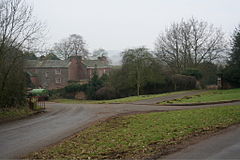| Little Salkeld | |
|---|---|
 Little Salkeld Flour Mill | |
 General view of village | |
| OS grid reference | NY566359 |
| Civil parish | |
| Unitary authority | |
| Ceremonial county | |
| Region | |
| Country | England |
| Sovereign state | United Kingdom |
| Post town | PENRITH |
| Postcode district | CA10 |
| Dialling code | 01768 |
| Police | Cumbria |
| Fire | Cumbria |
| Ambulance | North West |
| UK Parliament | |
Little Salkeld is a small village and former civil parish, now in the parish of Hunsonby, in the Westmorland and Furness district of Cumbria, England, a few miles to the north east of Penrith. In 1931 the civil parish had a population of 91. [1]

